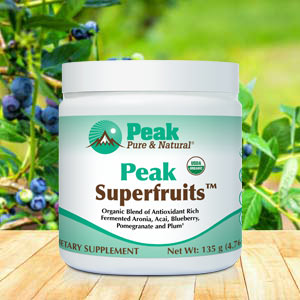Get Easy Health Digest™ in your inbox and don’t miss a thing when you subscribe today. Plus, get the free bonus report, Mother Nature’s Tips, Tricks and Remedies for Cholesterol, Blood Pressure & Blood Sugar as my way of saying welcome to the community!
The ‘every day’ nutrient that takes down the Alzheimer’s gene

When we hear the word “gene,” many of us tend to think it means something that can’t be changed.
For instance, if we find out we carry a gene related to a certain disease, like Alzheimer’s, we automatically assume our fate is sealed.
But that’s not exactly true…
Because of a field of science called epigenetics, we now know that while genes remain unchanged, their expression is changeable via external modifications which affect how cells read genes and then turn those genes “on” or “off.”
So even though carrying the Alzheimer’s gene means the odds of getting Alzheimer’s are higher than for people without the gene, a lot depends on lifestyle factors you can modify — and this one is so easy, there’s no excuse not to try it…
Different alleles, different risk levels
Apolipoprotein E (APOE) is a gene that carries different levels of risk for developing Alzheimer’s disease depending on which allele of the APOE gene you have. An allele is a different form of a gene that’s found at the same spot on a chromosome.
There are three different alleles of the APOE gene. The most common, APOE3, indicates an average risk for Alzheimer’s. Then there’s APOE2, carried by roughly 5 to 10 percent of people. That allele is actually associated with a reduced risk of Alzheimer’s.
It’s APOE4 you want to watch out for. APOE4 is present in 15 to 25 percent of people and indicates an increased risk for Alzheimer’s. About 2 to 5 percent of people carry two copies of the allele, which makes their Alzheimer’s risk even higher.
However, it’s important to remember that while inheriting APOE4 increases a person’s risk of Alzheimer’s, some people with this allele never develop the disease at all.
Still, if you carry APOE4, you may want to know if there are any ways you can minimize your elevated risk. Luckily, an international team of researchers has discovered at least one way you can offset one of the main features of Alzheimer’s…
Fiber lowers risk for people with APOE4
The study involved a group of adults over 65 in two areas of Tuscany, Italy. Researchers analyzed their diet, cognitive state, and other health parameters every three years for 15 years.
“Cognitive decline, precursor of the development of dementia in old people, is currently a public health problem without treatment,” notes Dr. Tomàs Meroño of the University of Barcelona, one of the authors of the study. “This is why it is crucial to detect modifiable risk factors that allow us to develop prevention strategies, among which the diet has proved to be one of the most efficient.”
Study results show that in participants with the APOE4 allele, an increase of five grams a day in fiber intake was linked to a 30 percent lower risk of cognitive decline.
“Evidence shows that healthy diets, characterized by a high consumption of fiber-rich foods, have a positive impact on cognition, but the specific role of fiber intake plays on the cognitive function is still unknown,” Meroño says.
Ways to add more fiber
This isn’t the first time fiber has been linked with improving Alzheimer’s risk. My colleague Dr. Adria Schmedthorst has noted that fiber can flush out a neurotoxin in the gut that’s linked to Alzheimer’s.
Whether you’re carrying the APOE4 gene or not, it’s always a good idea health-wise to make sure your diet includes plenty of fiber. Fiber keeps your gut healthy, which keeps the rest of your body in good working order.
Unfortunately, most of us aren’t getting enough fiber. The average American eats roughly 10 to 15 grams of fiber daily, which falls far short of the mark set by the USDA.
The USDA recommends women up to age 50 consume 25 grams a day of fiber, while men up to age 50 should go for 38 grams. Over 50, that number drops slightly to 21 grams daily for women and 30 grams for men.
There’s one tried and true way to add more fiber to your diet: eat more fiber-rich fruits, veggies, whole grains and legumes. This list can help you choose which of these foods has the most fiber bang for your buck.
Start adding more fiber slowly. If you add it too quickly you might feel gassy and experience some bloating or cramping. Increase it gradually over a few weeks — and you’ll be so glad you did. Fiber is the one nutrient with a plethora of disease-fighting potential we just don’t get enough of.
Editor’s note: While you’re doing all the right things to protect your brain as you age, make sure you don’t make the mistake 38 million Americans do every day — by taking a drug that robs them of an essential brain nutrient! Click here to discover the truth about the Cholesterol Super-Brain!
Sources:
Fiber intake reduces cognitive decline risk in older people with apolipoprotein ε4 allele — EurekAlert!
Apolipoprotein E gene variants shape the association between dietary fibre intake and cognitive decline risk in community-dwelling older adults — Age and Ageing
Alzheimer’s Disease Genetics Fact Sheet — National Institute on Aging














